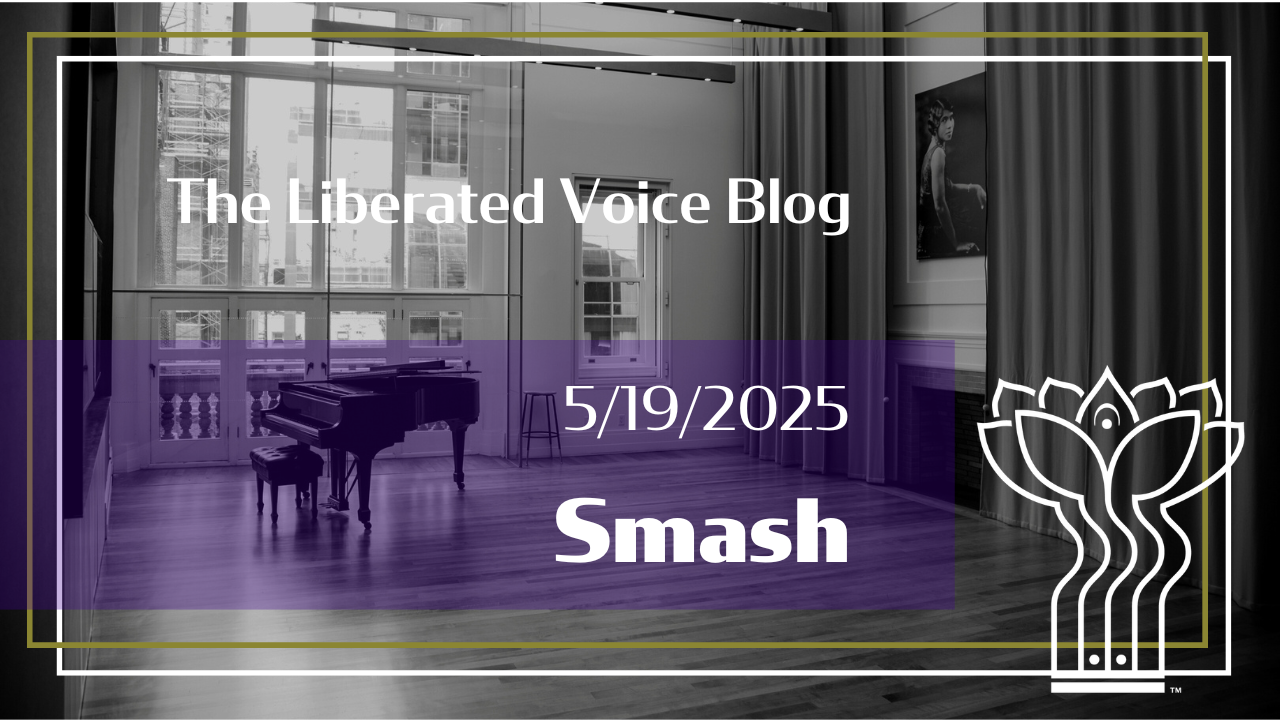Smash
There is tension, and then there’s Tension, with a capital “T”. The creative tension I experience preparing to write a blog post is one thing. The kind of Tension that you urgently need to get rid of because it’s messing up not just your singing but also your life, is something else.
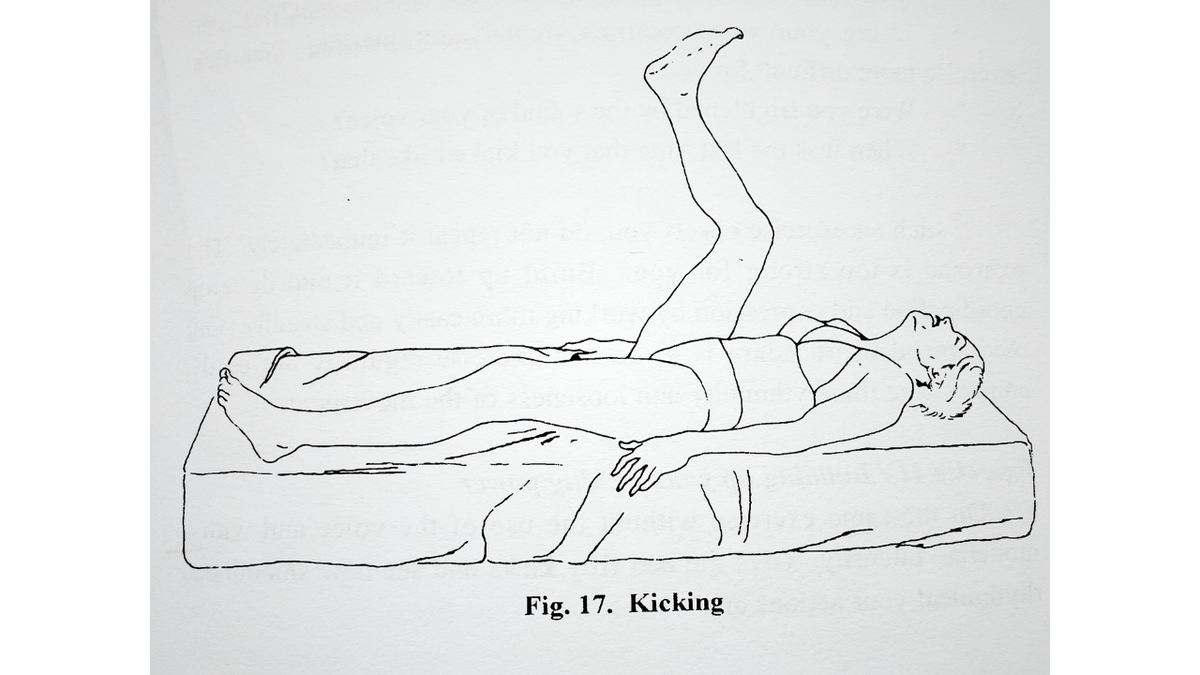
In my previous post, I promised to explore the relationship between breathing and self-regulation.
When I give myself a homework assignment like that, I am simultaneously enthusiastic about diving into the topic and anxious that I actually have no idea what I’m talking about. I’ve got a bunch of dots to connect, and I’m excited to see how the connections in my mind will coalesce into words that make sense on the page, but I don’t know how it’s all going to turn out yet. So there is some tension building up inside me as I consider the project.
That isn’t necessarily a bad thing—quite the contrary, actually. “Tension” generally gets a bad rap. After all, what is desire, if not the tension of wanting something you don’t yet have? What is motivation, if not a tension that mobilizes your energy and enables you to reach for the thing you desire?
There is tension, and then there’s Tension, with a capital “T”. The creative tension I experience preparing to write a blog post is one thing. The kind of Tension that you urgently need to get rid of because it’s messing up not just your singing but also your life, is something else.
I’m invoking the Goldilocks Principle for the second week in a row, because the way you experience tension has a lot to do with whether you’re feeling too much of it, too little, or just enough to fuel your motivation so you can enjoy the ride, with all its ups and downs.
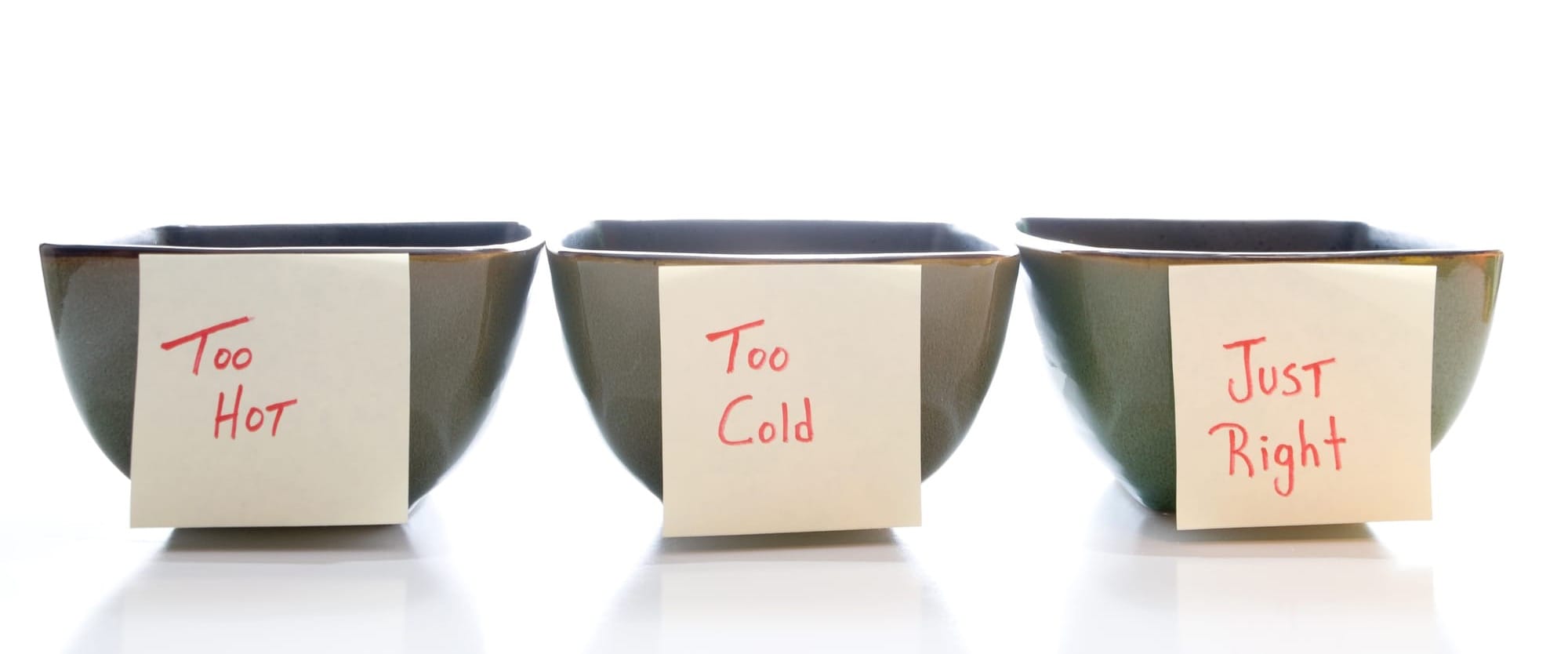
Too little tension, and there’s insufficient motivation to do anything or go anywhere. Too much tension, and the longing to possess what you desire becomes too fraught for its pursuit to be pleasurable. But when the level of tension is just right, you can embark on your hero’s journey, or your blog post, with the wind of that tension filling your sails, leading you to the destination you have been dreaming of.
I think of self-regulation as the means whereby you maintain a balanced sense of tension in your body, your mind, and your pursuits. Like interoception, I believe that the ability to regulate physical and emotional tension ought to be our birthright, a skill that all of us can learn to do brilliantly. Unfortunately, like interoception, developing skill at self-regulation is not terribly well supported by our culture.
Which is why I ended up engaging in a course of Bioenergetic Therapy in my early 20s.
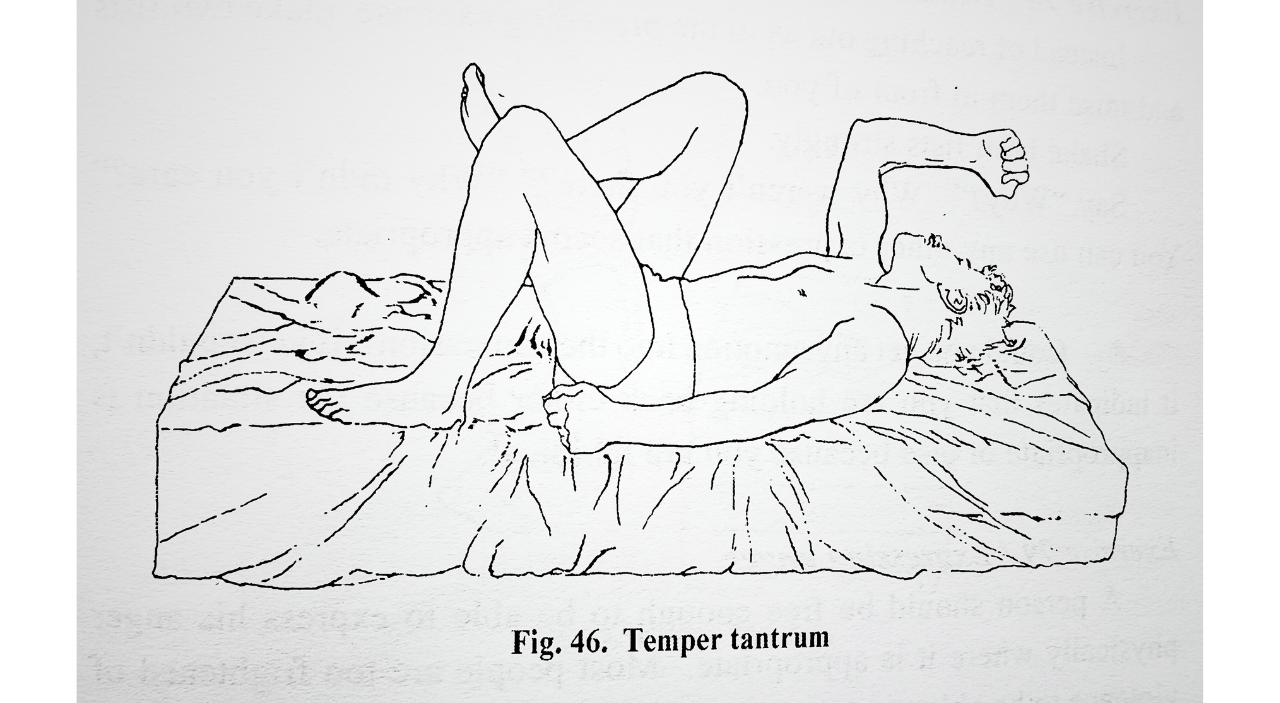
Bioenergetics is premised on the idea that when we fail to regulate our feelings or integrate our experiences, we accumulate unresolved tension in our bodies and minds, leading us to develop physical and mental rigidity that limits both range of motion and range of e-motion. Bioenergetic therapy involves the application of stress postures and strategies for mobilizing the breath, with a view to breaking down accumulated “armor”, restoring suppleness to our tissues, and promoting the free flow of our thoughts and feelings.
This process was an indelible part of my origin story as a singer and voice teacher. Bioenergetics enabled me to access my vocal and breathing anatomy in a way that facilitated singing with much greater power, flexibility, and stamina; it also showed me that freeing up the body brings freedom to the voice. However, I am not necessarily recommending that you do likewise.
Bioenergetics may be the means whereby I began to liberate my body and my voice from a surfeit of tension, but in retrospect I do not feel that it offers a healthy paradigm for developing skill at self-regulation. The stress postures were designed to escalate discomfort to the point that your whole body shakes uncontrollably and you can no longer resist the urge to scream. We were exhorted to kick and thrash on a mattress, or pound on it with our fists or a tennis racquet while breathing fast and deep, keeping our eyes focused, and shrieking GET AWAY FROM ME, or whatever obscenities came to mind.
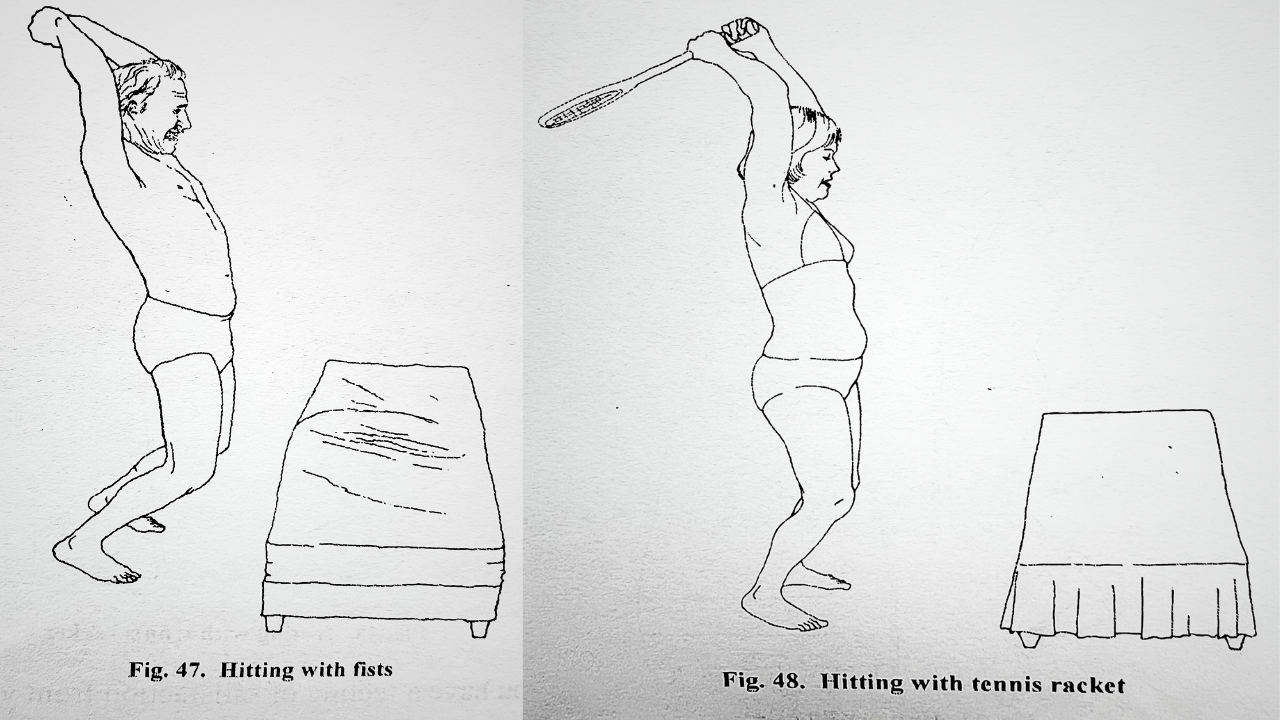
The goal was to build up so intense a physical charge that it would override the defenses of our physical and mental armoring. We would get caught up in the momentum, pound and scream our faces off until we wore ourselves out, and collapse onto our vanquished mattresses.
It sure felt dramatic, but did it work?
Kind of?
My voice was sometimes hoarse for a week afterwards, and I was sore from head to toe, but boy did the experience clean me out. I began to feel like I had more permission to express myself in moments when it would formerly have been my instinct to self-censor. I became capable of breathing more deeply. And a significant consequence of more range of motion plus more range of e-motion was that yes, my voice took on greater range and depth (once the hoarseness abated).
Looking back, Bioenergetics feels like the bodywork equivalent of getting really mad, throwing your television out the window, feeling a little better for a while, and then coming to your senses and realizing that, on top of whatever was already stressing you out, now you also need a new television.
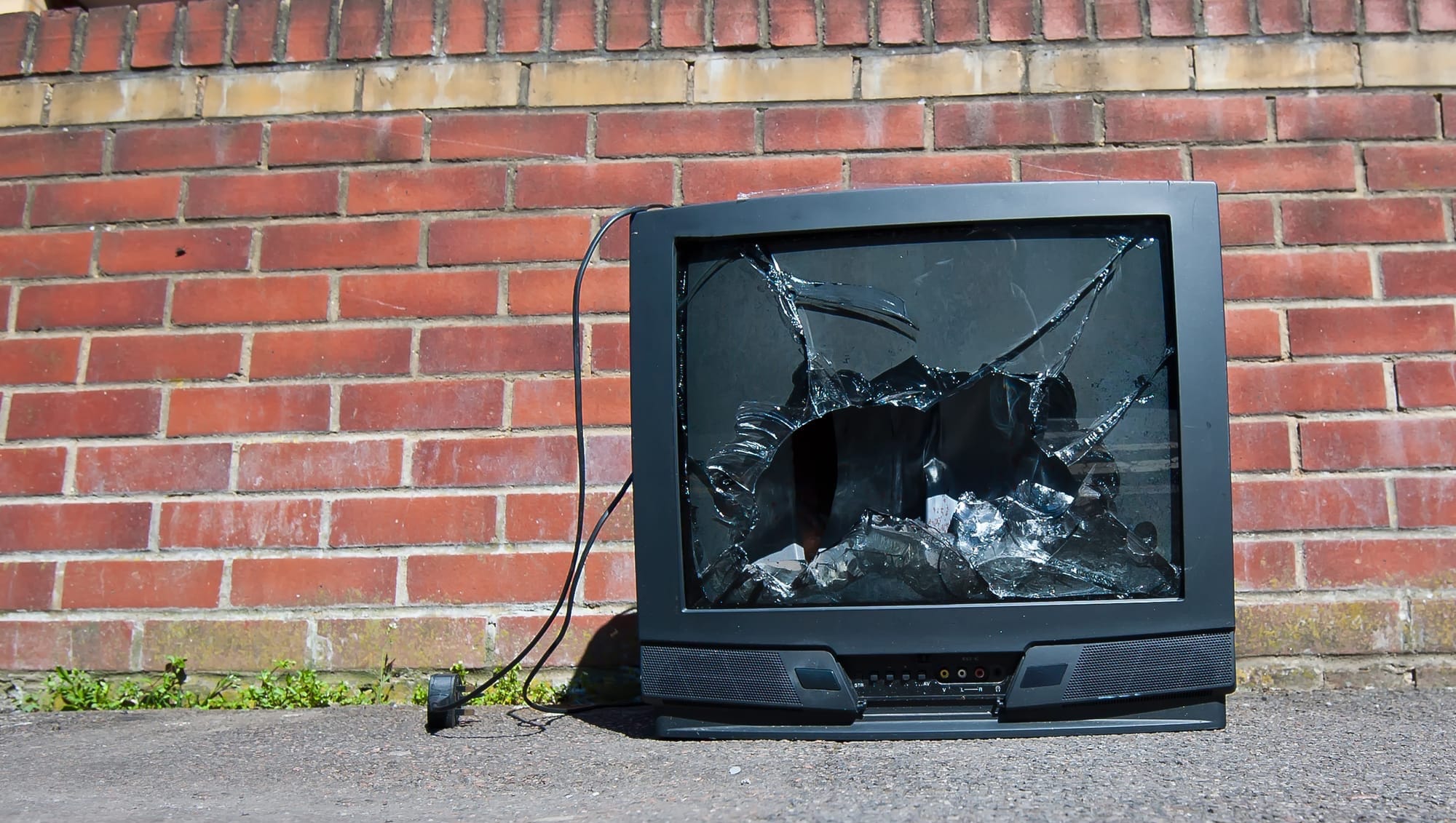
However, it did teach me about the incredibly significant role that breathing plays in self-regulation.
When we are feeling safe, confident, peaceful, and supported, our breathing tends to be deep and slow. Deep, slow breathing calms the sympathetic nervous system, literally “down-regulating” our state. When we feel excited, our breathing becomes faster and may also become more shallow, effectively “up-regulating” our state.
But when we become terrified, enraged, or otherwise stimulated to an intolerable degree of emotional or physical pain, we instinctively shut down. We shut down our breathing, which shuts down the whole feeling process. We protect ourselves from intolerable levels of pain by creating conditions that allow us to feel very little. If we face intolerable levels of pain on an ongoing basis, we may habituate patterns of shallow breathing or holding our breath, just in order to get from one day to the next without continually screaming or lashing out. Over time, habituated patterns of tensing against anticipated pain can turn into the kind of chronic tension that Bioenergetics tries to unpack.
So what’s the alternative?
There are therapeutic modalities that can alleviate chronic physical tension and increase our range of motion, as well as therapeutic modalities that can alleviate habituated patterns of thought and feeling that can make us feel stuck. For me, these modalities are only effective and sustainable when we are able to consciously consent to participating in them at every step.
There are certainly some areas where relegating your consent can provide cathartic, effectively regulating experiences. However, psychotherapy, fitness, and vocal education are not among them.
- When a therapeutic modality creates conditions that facilitate your overriding your own consent in order to release big emotions, like Bioenergetics does, it teaches you to push past your comfort zone in order to express yourself.
- When a fitness modality is premised on “no pain, no gain”, you habituate the process of imposing your will on your own body and learn to ignore or override the feedback you get from it.
- When a voice teacher or performance assignment requires you to sing something that is beyond your current physical, technical, or emotional capacity, you learn to impose your will on your own heart in a way that can deeply wound your desire to sing.
After all, what is desire, if not the tension of wanting something you don’t yet have?
The desire to develop skill at singing is a tension that not only deserves good ongoing balance and regulation—its fulfillment requires ongoing balance and regulation. Singing requires full breathing and emotions that flow freely. We cannot sing anything that we do not consent to express with all our being. At least not well, or joyfully.
I’m not a therapist, and it is thus outside the scope of my practice to recommend a psychotherapeutic alternative to Bioenergetics!
I am a fitness trainer, however, which means that it is within the scope of my practice to recommend and teach modalities to alleviate chronic physical tension and increase range of motion. Next week’s post will cover strategies for freeing up your breathing that can be effective in the voice studio, without posing a threat to your television, your mattress, or all of those nice people around you.
